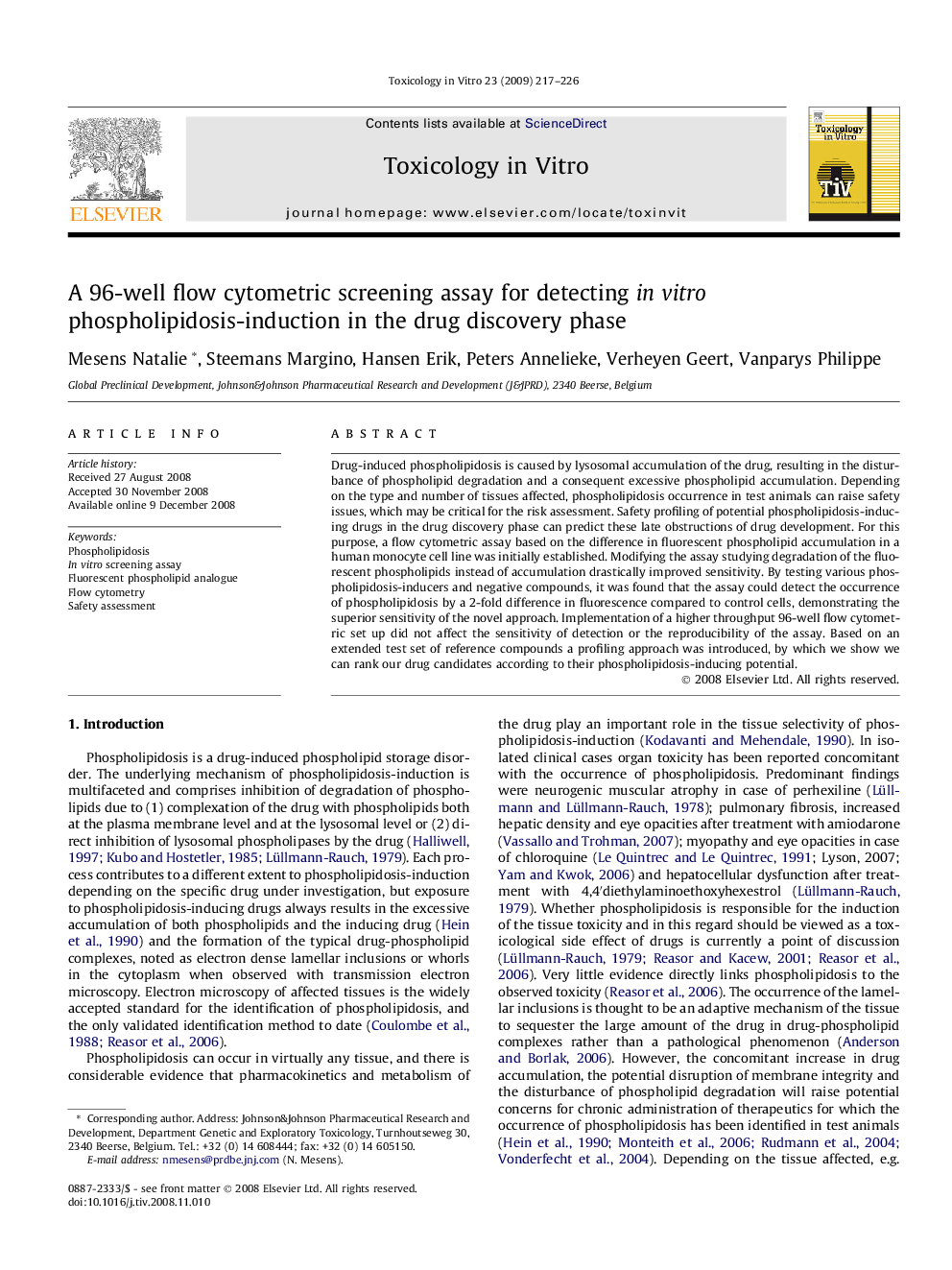| Article ID | Journal | Published Year | Pages | File Type |
|---|---|---|---|---|
| 2603124 | Toxicology in Vitro | 2009 | 10 Pages |
Drug-induced phospholipidosis is caused by lysosomal accumulation of the drug, resulting in the disturbance of phospholipid degradation and a consequent excessive phospholipid accumulation. Depending on the type and number of tissues affected, phospholipidosis occurrence in test animals can raise safety issues, which may be critical for the risk assessment. Safety profiling of potential phospholipidosis-inducing drugs in the drug discovery phase can predict these late obstructions of drug development. For this purpose, a flow cytometric assay based on the difference in fluorescent phospholipid accumulation in a human monocyte cell line was initially established. Modifying the assay studying degradation of the fluorescent phospholipids instead of accumulation drastically improved sensitivity. By testing various phospholipidosis-inducers and negative compounds, it was found that the assay could detect the occurrence of phospholipidosis by a 2-fold difference in fluorescence compared to control cells, demonstrating the superior sensitivity of the novel approach. Implementation of a higher throughput 96-well flow cytometric set up did not affect the sensitivity of detection or the reproducibility of the assay. Based on an extended test set of reference compounds a profiling approach was introduced, by which we show we can rank our drug candidates according to their phospholipidosis-inducing potential.
